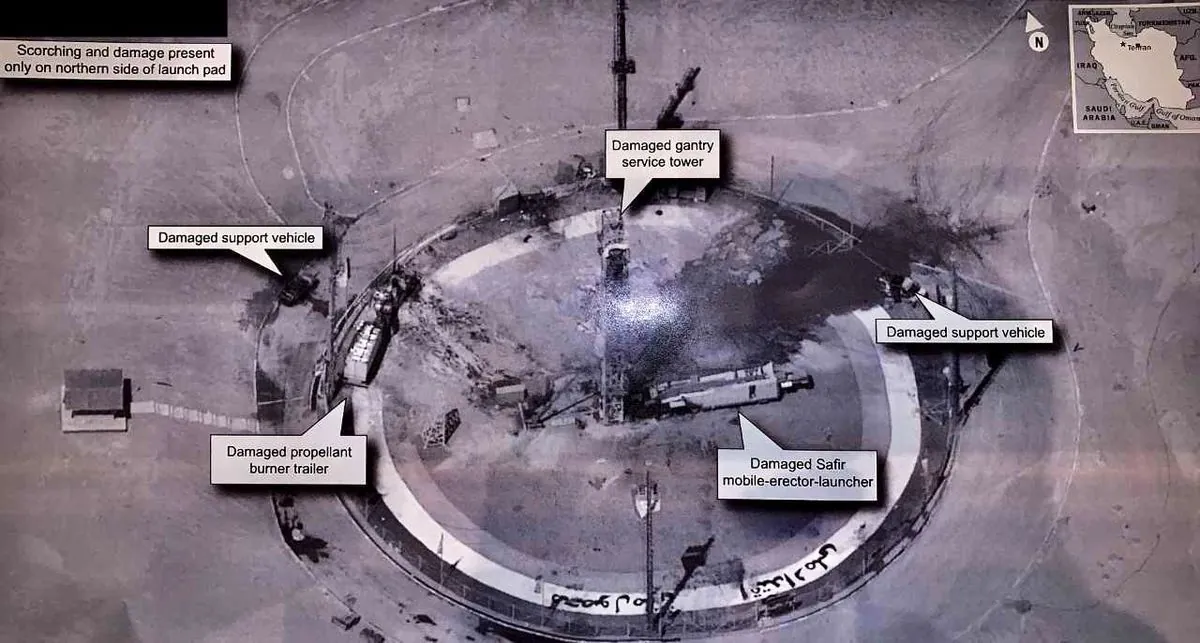On April 13, 2024, Iran successfully launched a satellite into orbit using a rocket manufactured by the country's Revolutionary Guard. This event marks a significant development in Iran's space program, occurring against a backdrop of regional tensions and international concerns about the nation's nuclear activities.
The satellite-carrying rocket, identified as the Qaem-100, successfully placed the Chamran-1 satellite into a 550-kilometer orbit. This launch represents the second successful mission for the Qaem-100, following its initial triumph in January 2024. The Qaem-100 is a three-stage solid-fuel satellite carrier rocket, showcasing Iran's advancing capabilities in space technology.
Iran's space program, which began in 2004 with the establishment of the Iranian Space Agency, has made significant strides over the past two decades. The country's first domestically produced satellite, Omid, was launched in 2009, marking a milestone in Iran's space exploration efforts.
The recent satellite launch occurs amid heightened tensions in the Middle East, particularly due to the ongoing Israel-Hamas conflict in Gaza. Iran's involvement in regional affairs, including its support for various non-state actors, has contributed to a complex geopolitical landscape.
Concurrently, Iran continues to enrich uranium to levels approaching weapons-grade, raising concerns among nonproliferation experts. The country's nuclear program, which began in the 1950s with U.S. assistance under the Atoms for Peace initiative, has been a source of international controversy for years. Since 2006, Iran has faced various sanctions related to its nuclear activities.
The International Atomic Energy Agency (IAEA), established in 1957 to promote peaceful use of nuclear energy, has repeatedly warned that Iran now possesses enough enriched uranium for "several" nuclear weapons, should it choose to produce them. However, Iranian authorities consistently maintain that their nuclear and space programs serve purely civilian purposes.
"Iran's satellite launches defy a U.N. Security Council resolution and we call on Tehran to undertake no activity involving ballistic missiles capable of delivering nuclear weapons."
The U.S. intelligence community has expressed concerns that Iran's development of satellite launch vehicles could accelerate the timeline for developing intercontinental ballistic missiles (ICBMs), which typically have a range exceeding 5,500 kilometers. This potential dual-use technology has heightened international apprehension about Iran's space program.
Iran's political landscape has also seen significant changes in recent years. The country's space program gained momentum under the presidency of Ebrahim Raisi, who came to power in 2021. However, Raisi's unexpected death in a helicopter crash in May 2024 has left questions about the future direction of Iran's space and nuclear initiatives under the new leadership.
The satellite launch also coincides with the approaching second anniversary of Mahsa Amini's death, which ignited nationwide protests against Iran's mandatory hijab law and theocratic governance. These events underscore the complex interplay between Iran's technological advancements, international relations, and domestic social issues.
As Iran continues to develop its space capabilities, the international community remains watchful, balancing concerns over potential military applications with recognition of a sovereign nation's right to peaceful space exploration.
